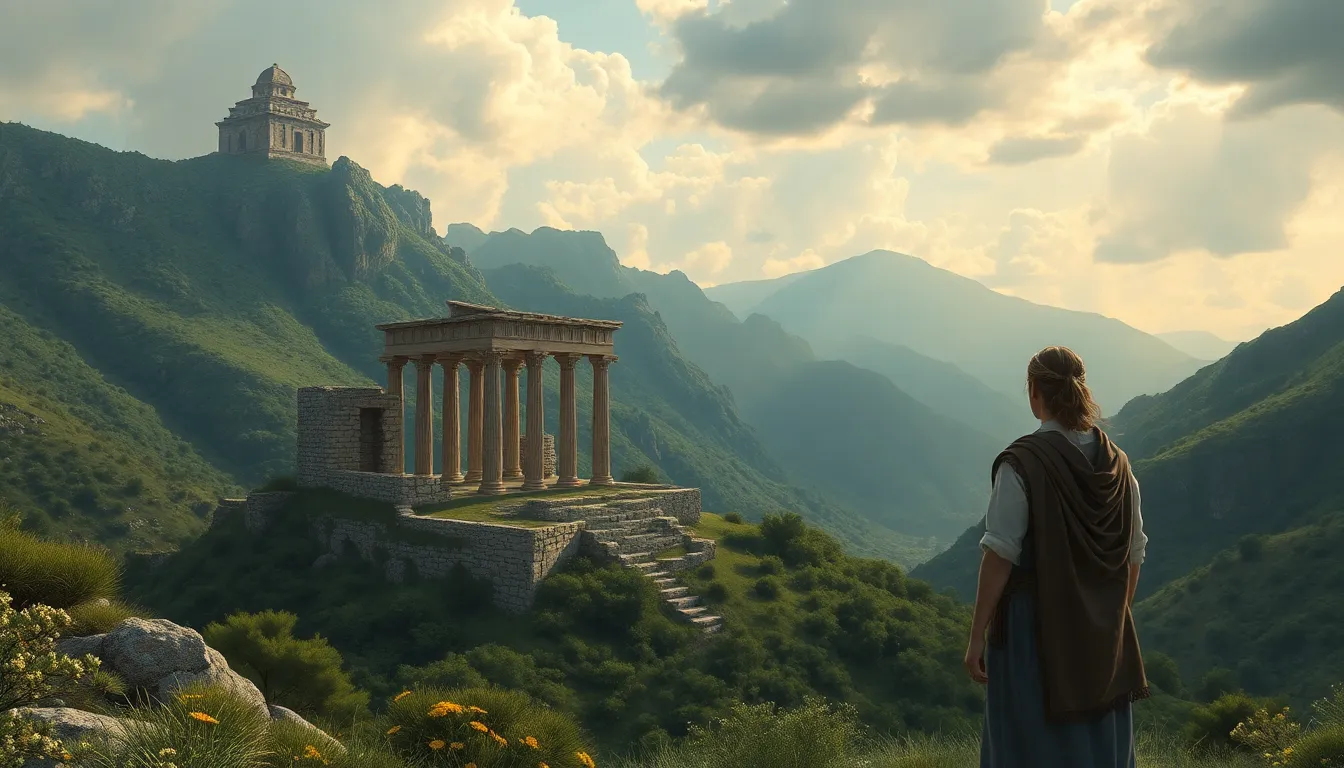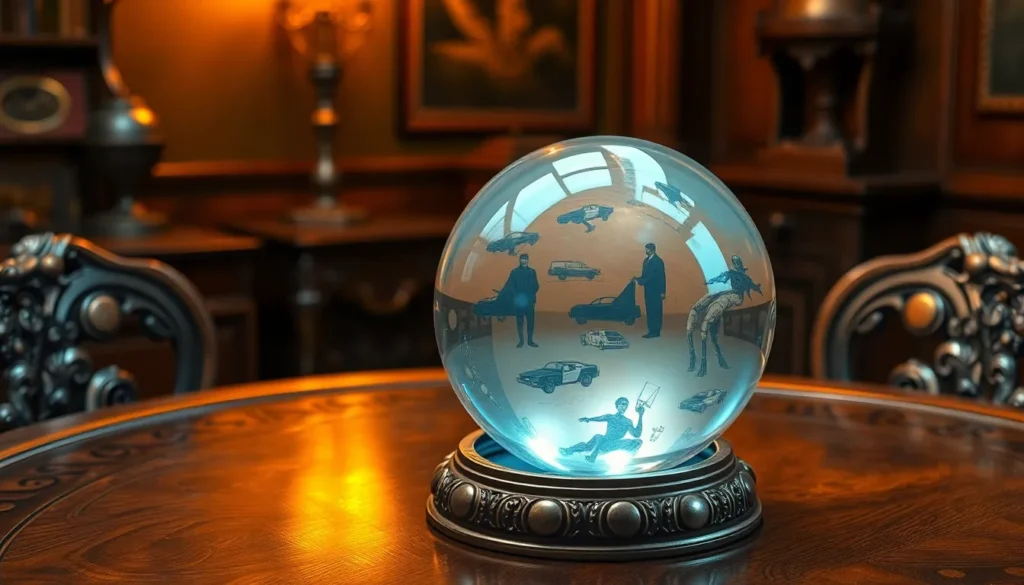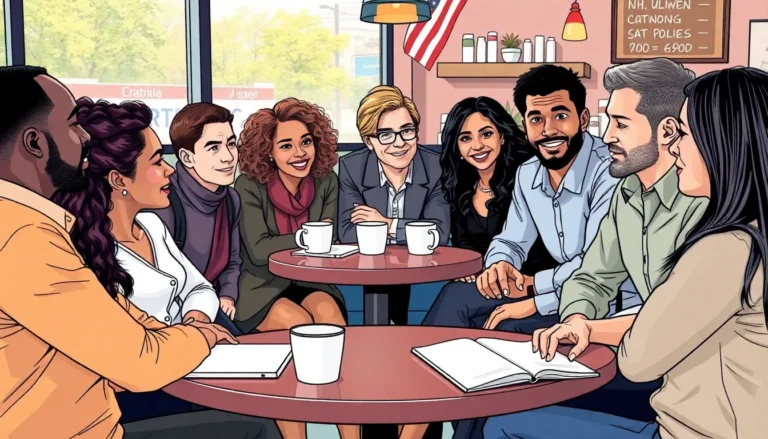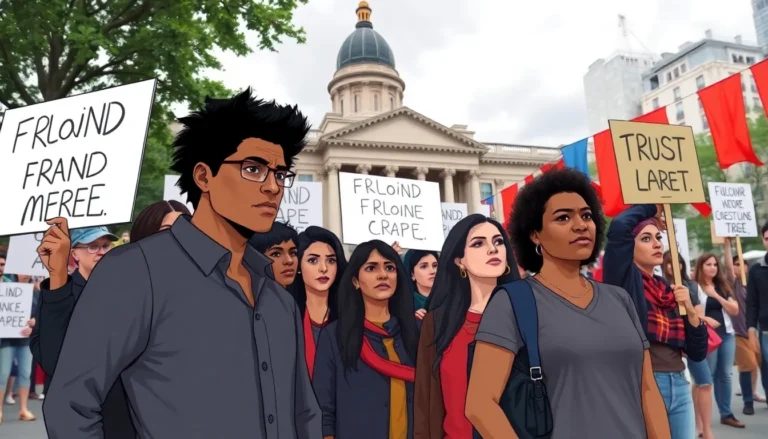Throughout history, people have gazed into their crystal balls, crafting wild predictions about the future. From flying cars to robot butlers, these forecasts often spark laughter and disbelief. But what if they’re not as far-fetched as they seem?
Table of Contents
ToggleThe Allure of Old Predictions of the Future
Old predictions of the future often capture imaginations with their creative visions. Nostalgic elements emerge as people reflect on forecasts like flying cars and robot butlers. Skepticism surrounds these forecasts, yet many inspire wonder and curiosity. Humans find it fascinating to explore both the practical and whimsical aspects of future advancements.
Consider how early predictions about technology showcased optimism. Visionaries presented ideas reflecting societal hopes and challenges. Each forecast encapsulated desires for a more efficient and advanced world. Such predictions not only entertained but also prompted discourse on what progress might entail.
Notably, some predictions achieved remarkable accuracy. The emergence of mobile phones and automated features from decades ago illustrates how insightful foresight can shape reality. Individuals often admire these prescient visions for their boldness.
Further, predictions provide a lens for understanding cultural values at specific times. The context in which these forecasts arose reveals societal priorities, whether focused on leisure or productivity enhancements. Acknowledging this helps contextualize predictions within historical frameworks.
Old predictions also provoke contemplation about the limits of imagination. While some ideas remain far from realization, others continue to evolve and develop. This dynamic interplay invites reflection on the art of forecasting itself and how it mirrors collective human aspirations.
Embracing this allure leads to deeper appreciation for creativity in envisioning future possibilities. Curiosity ignites as readers delve into the fascinating realm of what once seemed absurd yet opens doors to ongoing innovation.
Notable Predictions Throughout History

Predictions about the future have fascinated societies for centuries. Various cultures have offered intriguing glimpses through their prophecies and forecasts.
Ancient Prophecies
Ancient civilizations made remarkable predictions through oracles and seers. The Oracle of Delphi in Greece provided guidance on political and military matters, influencing significant events with its cryptic messages. In China, the I Ching reflected societal beliefs about destiny and change. Notable figures like Nostradamus addressed future calamities and transformations, often noted for their enigmatic verses. His quatrains still capture interest today due to their perceived accuracy. Such ancient predictions reveal the hopes and fears of those times, often intertwining spirituality with foresight.
Predictions from the Renaissance
During the Renaissance, thinkers envisioned a future shaped by science and exploration. In 1550, Michel de Nostredame published “Les Prophéties,” which garnered attention for its ambitious future scenarios. Leonardo da Vinci sketched fantastical inventions including flying machines, showcasing human creativity and innovation. Additionally, Francis Bacon’s “The New Atlantis” presented an ideal society empowered by scientific advancement. These predictions not only reflected Renaissance values but also addressed the allure of progress, emphasizing the role of inquiry and discovery in shaping civilization.
The Impact of Technology on Predictions
Technological advancements significantly shape predictions about the future. These developments often align with the social and economic climates of their times.
Predictions from the Industrial Revolution
Innovations during the Industrial Revolution led to transformative predictions. Inventors like Nikola Tesla envisioned devices such as wireless communication and electric power transmission, concepts that came true decades later. Factories redefined work environments, inspiring predictions about urbanization and labor changes. These forecasts often revealed hopes for improved living standards, emphasizing the need for innovation in everyday life. The period’s fascination with steam engines and mechanization also spurred predictions about automation, foreseeing a future that prioritized efficiency.
Futuristic Visions of the 20th Century
The 20th century brought a surge of imaginative predictions influenced by rapid technological progress. Writers and inventors, such as Arthur C. Clarke and H.G. Wells, speculated about space travel, robotics, and advanced communication. Concepts like the Internet appeared in science fiction decades before their existence. Predictions became bolder, reflecting both excitement and trepidation about the unknown. Society embraced visions of flying cars and automated homes, showcasing a deep belief in innovation’s potential to elevate everyday life. These futurists sparked public interest in science and technology, leading to the eventual realization of many of their dreams.
Cultural Reflections in Predictions
Old predictions reveal much about cultural values and societal aspirations. Through the lens of past forecasts, individuals can assess how imagination has shaped ideas about the future.
Literature and Film Influences
Authors and filmmakers have played pivotal roles in shaping future predictions. Works by H.G. Wells and Isaac Asimov introduced concepts like space travel and advanced robotics, influencing public perception of technology. Films such as “Metropolis” depicted urban futures filled with machines, stimulating imagination about potential societal structures. Sci-fi narratives fostered curiosity about innovation and its consequences, encouraging audiences to ponder humanity’s place in an evolving world. These creative outlets not only entertained but also sparked discussions on ethics and possibilities in technology.
Predictions and Societal Change
Predictions often mirror societal transformations and highlight shifts in values. Technological advancements during the Industrial Revolution prompted thinkers like Nikola Tesla to foresee changes like electric power and communication. These insights aligned with the aspirations of a rapidly changing world, showcasing how innovation could drive progress. Societies reacted to these forecasts, adapting to new realities while addressing the challenges that accompanied change. As urbanization accelerated, public discourse evolved around labor and mechanization, reflecting a collective response to future possibilities. Such predictions continue to inspire action and shape contemporary thought.
Lessons Learned from Old Predictions
Old predictions illustrate the optimistic visions societies held for the future. Nostalgic forecasts reveal a collective hope that technology could enhance everyday life. Predictions from figures like Nikola Tesla not only foresaw advancements in communication but also shifted societal priorities toward innovation.
Observations on these predictions show a pattern of imagination reflecting cultural contexts. Early forecasters like Leonardo da Vinci inspired generations to explore scientific possibilities. Their visions provided a foundation for future innovations and encouraged critical thinking.
Comparing old predictions to recent technological developments highlights striking parallels. Flying cars, once deemed fanciful, now seem more possible as advancements in transportation technology emerge. This connection underscores the importance of imagination in driving innovation forward.
Cultural values also play a significant role in shaping predictions. As societies evolve, so do collective aspirations and challenges. The fears and hopes expressed in old predictions resonate with contemporary experiences, emphasizing the ongoing dialogue about the future.
Discussions about ethical implications of technological advancements gain traction through literature and film. Works by authors like Isaac Asimov sparked conversations that continue today. Their ideas paved the way for critical discourse surrounding future innovations.
Old predictions serve as reminders of the potential within human creativity. The blend of hope and skepticism surrounding these forecasts encourages reflection on both past achievements and future possibilities. Each prediction offers a unique lens through which to assess societal evolution and the relentless pursuit of progress.
Old predictions of the future serve as a fascinating lens through which to view societal hopes and aspirations. They reflect not only the imaginative spirit of their time but also the cultural values that shaped them. As technology continues to evolve, these forecasts remind us of the importance of creativity in driving innovation.
The lessons learned from past predictions encourage a deeper understanding of how dreams can inspire real-world advancements. By examining what has come to pass and what remains unfulfilled, individuals can engage in meaningful conversations about the future. Ultimately, the interplay between imagination and reality continues to shape our collective journey forward.




